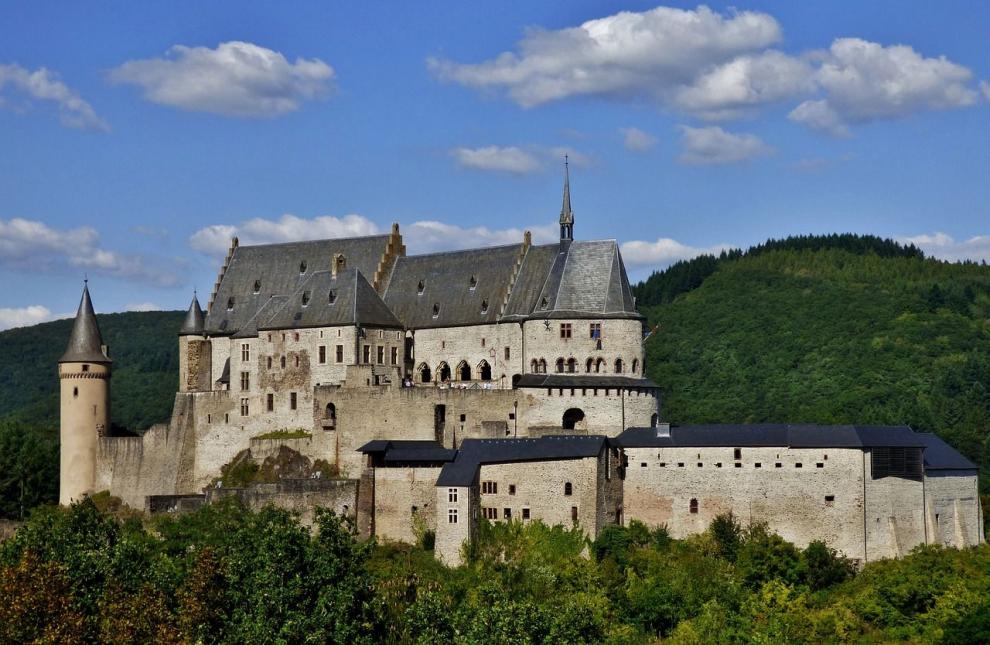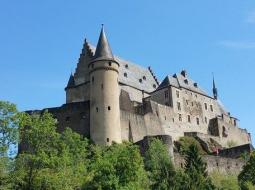Thessaloniki gets ready for its metro launch in November
The underground rapid transit lines have been under construction for almost two decades due to various project delays
 TheMayor.EU logo
TheMayor.EU logo 
The origins of Vianden date back to the Gallo-Roman age when there was a castellum on the site of the present castle. The original name of Vianden was Viennensis. Vianden possesses one of the oldest charters in Europe, granted in 1308 by Philip II, count of Vianden, from whom the family of Nassau-Vianden sprang, and who was consequently the ancestor of William of Orange.
In the Middle Ages, Vianden's craftsmen were recognised for their skills as tanners, drapers, weavers, barrelmakers, masons, locksmiths and goldsmiths. In 1490, they created guilds for their various trades. Over the years leathermaking became the major industry with the establishment of two tanneries at the end of the 19th century which finally closed in the mid-1950s.
The castle was built between the 11th and 14th centuries and became the seat of the counts of Vianden. It was further developed until the 18th century but with the departure of the Counts of Luxembourg to the Netherlands combined with the effects of fire and an earthquake, it slowly deteriorated. The final blow came in 1820 when William I of the Netherlands sold it to a local merchant who in turn sold off its contents and masonry piecemeal, reducing it to a ruin. There were several attempts at restoration but these were hampered by problems of ownership. Victor Hugo lived in the castle for three months in 1871. Not until 1977, when Grand Duke Jean ceded the castle to the State, was it possible to undertake large-scale work, most of which has now been completed.
Vianden is also remembered as the site of multiple battles in World War II. In November 1944 it saw fierce combat between the Luxembourg Resistance and German forces. It was the last place in Luxembourg to be freed from the Germans in February 1945 when the Americans completed Luxembourg's liberation. A memorial to the west of the town, overlooking the castle, commemorates this final battle.
Source: Wikipedia
Vienden is a commune with town status in the Oesling, north-eastern Luxembourg, with over 1,800 inhabitants. It is the capital of the canton of Vianden, which is part of the district of Diekirch. Vianden lies on the Our river, near the border between Luxembourg and Germany. As of 2013, the town of Vianden, which lies in the east of the commune, has a population of 1,811.
Source: Wikipedia
The scenic atmosphere and various local attractions have made Vianden a popular tourist destination in Luxembourg with many tens of thousands of visitors every year, especially from the Netherlands, Belgium and Germany. With its 14 hotels, four campsites and youth hostel, there is a wide selection of accommodation. In addition, Vianden benefits from the large numbers of day-trippers who take advantage of its restaurants, cafés, souvenir shops and sports facilities.
While the hydro-electric pumping plant continues directly and indirectly to provide employment for the local population, the closure of the Electrolux plant a couple of years ago has resulted in a considerable loss of jobs. The commune is now planning to encourage the establishment of skilled craft industries in the area by making land available for development.

Vianden is one of Luxembourg's main tourist centres with large numbers of holidaymakers and local visitors at all times of the year. In particular, the recently restored castle set spectactularly on the rocks above the town has become a museum which traces its history and its links with the royal families of Europe back to the Middle Ages. Then there are links with Victor Hugo who visited Luxembourg in 1862 and 1865 and spent a longer period in Vianden in 1871. His sketches and letters can be seen in the museum located in the house where he stayed next to the bridge over the Our. There is also a museum of arts and crafts (Musée d'Art rustique) and a doll and toy museum (Musée de la Poupée et du Jouet).
Many people just visit Vianden to wander through its hilly, historic streets or as a centre for walking, camping or cycling in the north of Luxembourg. There is a pleasant cycle route up the Sauer and Our valleys to Vianden and there are many signposted walks in the area.
During the summer months, a chairlift operates from the banks of the river in the lower part of the town taking you high above the castle with magnificent views over the landscape.
Vianden also has a number of annual events and celebrations. The most famous of these is the nut market in October when the local walnuts are on sale together with walnut cakes, walnut confectionery, walnut brandy and walnut liqueurs.
Source: Wikipedia
Place Vic. Abens /
L-9410 Vianden
Luxembourg